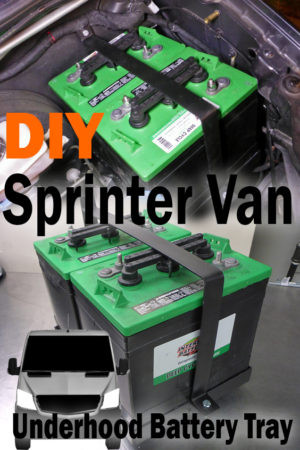 One of the first projects on our van was to install two 6 volt batteries under the hood. There is a nice open space for them on the driver’s side that seems like a no-brainer to use.
One of the first projects on our van was to install two 6 volt batteries under the hood. There is a nice open space for them on the driver’s side that seems like a no-brainer to use.
You might be asking why 6 volt batteries? There are a couple of reasons. Generally, 6 volt batteries take up less room. 12 volt deep cycle batteries are long and would take up valuable space, which we don’t have in a van. When wired in series, two 6 volt batteries provide the 12-volts we need while performing better during the constant abuse of discharging and charging. They are specifically designed for this since they are golf cart batteries.
I started with the design based on RB Components battery tray. They get $150 for their product which seems a bit steep, but everything they sell is top notch and it is likely well worth the money. I was about to buy their tray when I decided, “no, I’m building my own.” It had nothing to do with the money. After all, I had to spend probably $800-900 on the tools needed to fab this thing up. That’s ok though. Tools are an investment and they would allow me to build more of my own stuff for future projects. I also didn’t want to start on the very first thing on the van with something that was bought instead of build. Building my own tray would give me much more satisfaction and pride in our build.
Let’s Learn How to Weld!
Yeah, can you believe me, a mechanic of 20+ years, has never welded in his entire life? It’s pretty aggravating to rely on others for welding projects. I decided enough was enough and went out and bought a little 110 Lincoln welder. I did a little reading, grabbed two pieces of metal to practice on, and walla…I was welding. Easy peasy. Let’s do this.
Building the frame
I started with some 3/16″ thick, 1.5″ angle steel. Using a chop saw, 45° angles were cut on the corners to make a base for both batteries.
Brackets
I welded them together along with mounting brackets. This one show will attach to the inner fender. I gusseted the bracket for some added strength.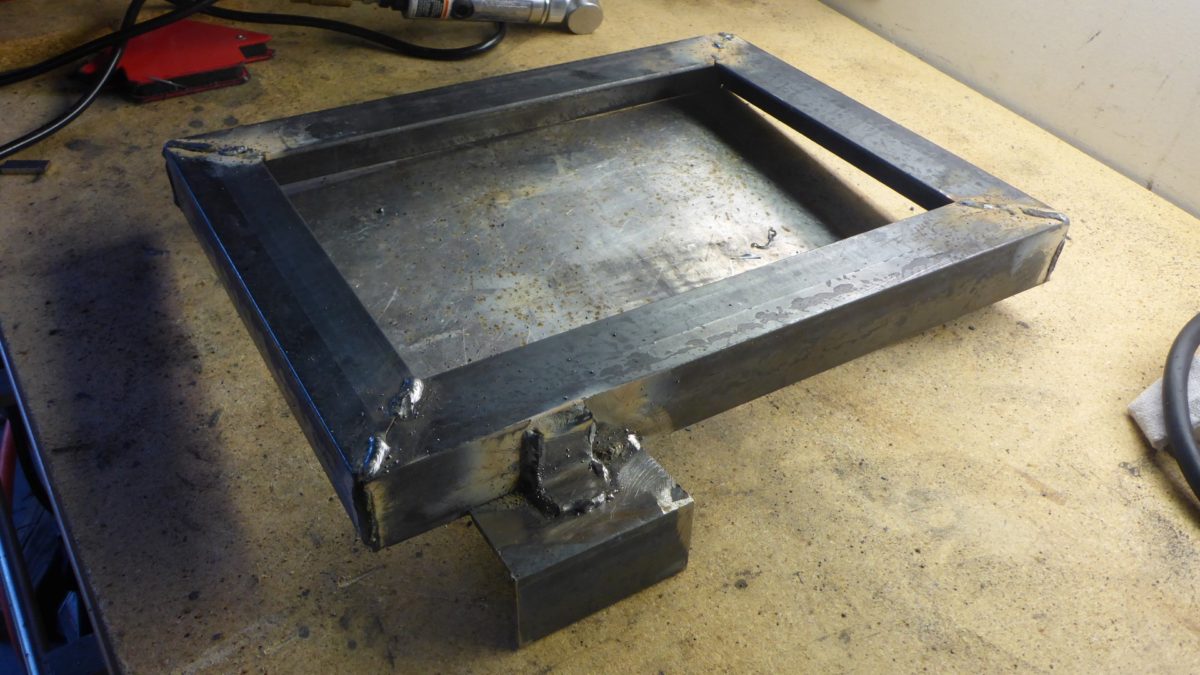
Battery Hold Down
I added some flat steel for a hold-down.
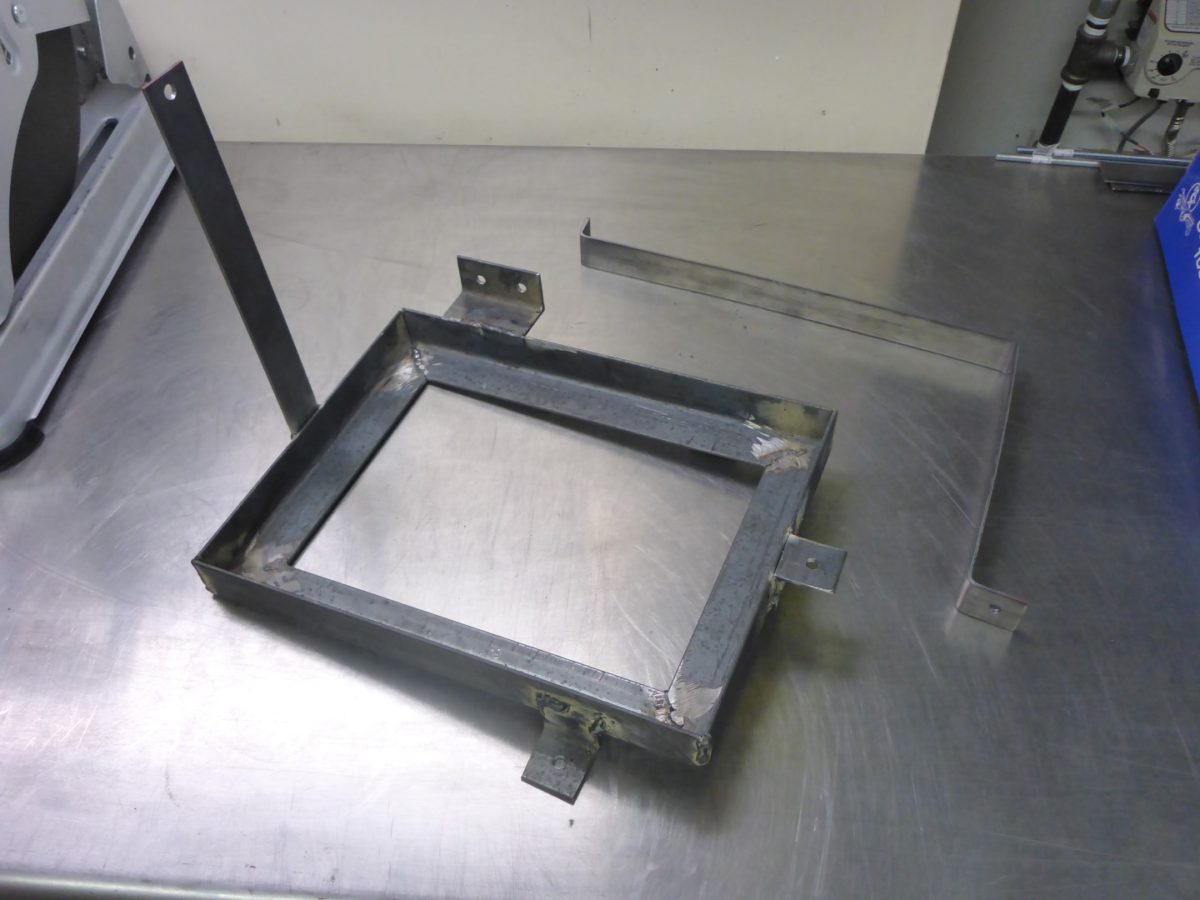
After a little paint, it was almost ready to bolt in.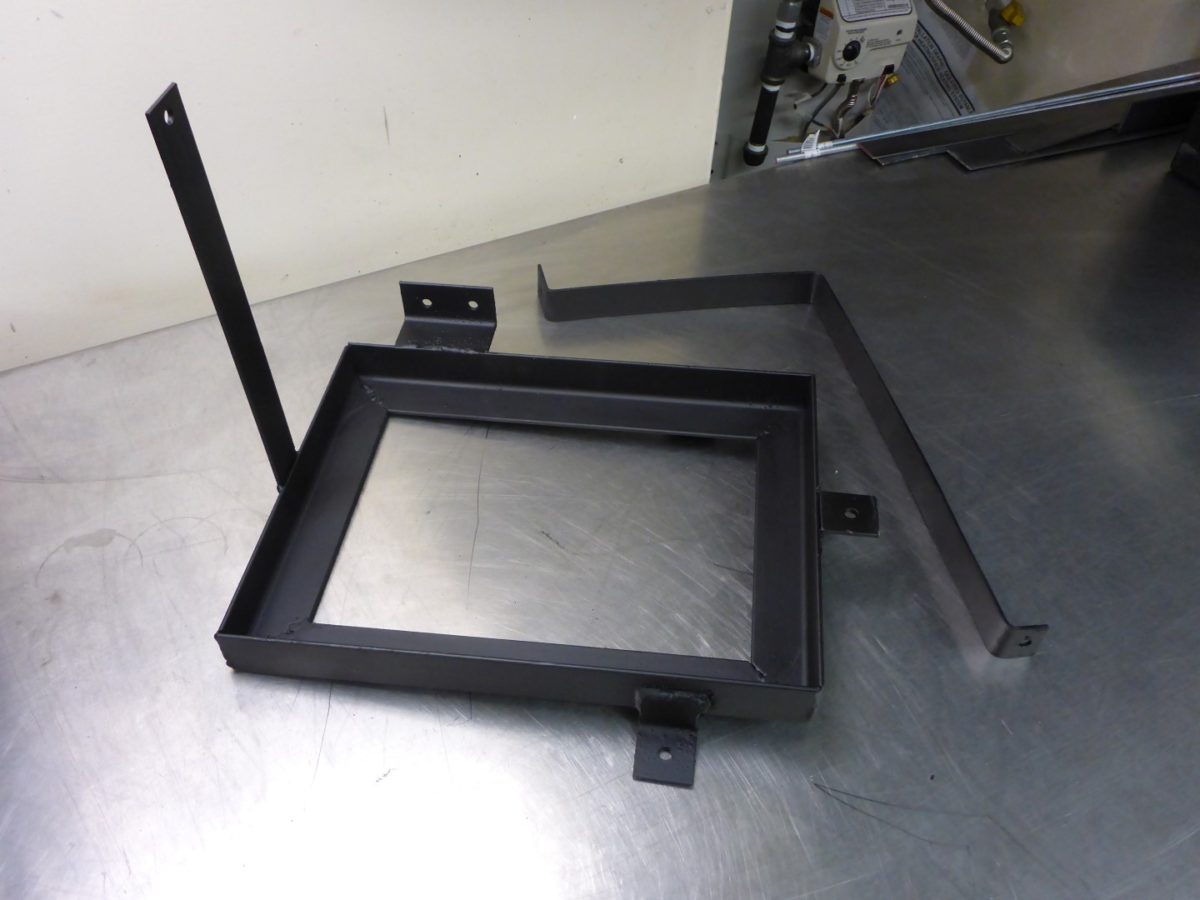
I did a quick test fit on the bench.
Installing
I installed two 8mm rivnuts in the inner fender to bolt the tray into place.
Rivnuts & Tool
- 150pcs Mixed Zinc Plated Carbon Steel Rivet Nut Threaded Rivnut Insert Nutsert M4 / 5 / 6 / 8 / 10
- Astro Pneumatic Tool 1452 XL Nut/Thread Setting Hand Riveter Kit 1/2″ Capacity
The battery tray has 3 mounting points and is plenty strong.
It was time to put the batteries in. These suckers are heavy so I made a handle out of a coat hanger to lower them into place.
Both batteries were installed. Perfect fit! 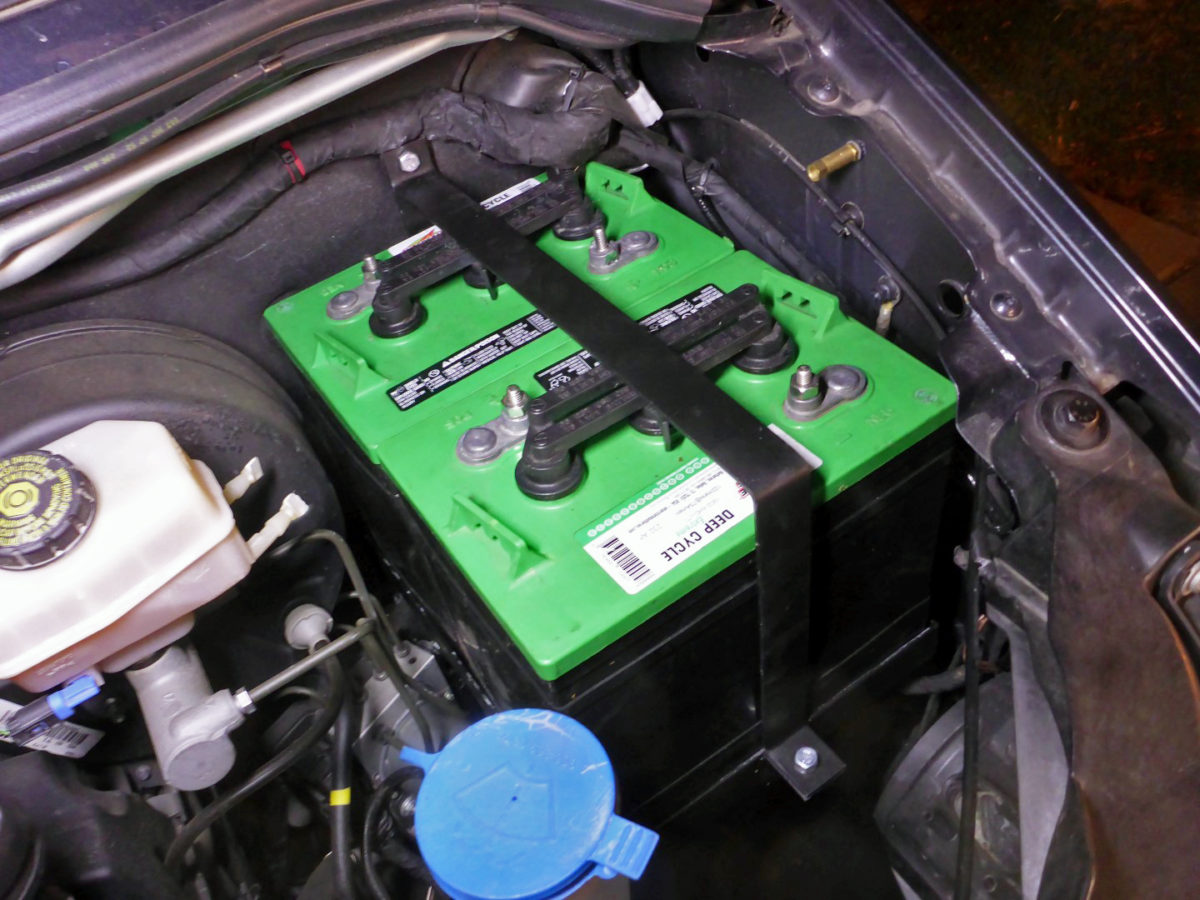
Update (3/9/18): Wiring
Since building the tray and installing these batteries, I have wired them up to my inverter. I used 2/0 gauge welding cable since it would have to go to the back of the van. This way there is the least possible voltage drop across the circuit. I crimped 2/0 gauge 5/16″ lug ends with one of those super badass crimpers for large gauge wire. I used a 150A breaker instead of a fuse for main circuit protection on the positive cable.
Update to the Update! (2020)
While the circuit breakers worked, over time they got weak and would trip or reset under heavy loads like our water heater, therefore I opted to install 200A fuses instead.
Tools & Parts
- Crimping Tool
- 2/0 AWG 5/16″ Stud Copper Wire Lugs
- 2/0 Gauge Premium Extra Flexible Welding Cable 600 Volt
- 150A Circuit Breaker
- 200A fuses
Charging
In addition to our solar setup, the batteries also get charged off the van’s 200 amp alternator while driving. I routed a 4 gauge battery cable through the factory wire harness channel on the bottom of the engine. (I have the 4cyl BTW).
I used a smart battery isolator in between the batteries and alternator. This cool little module automatically connects and disconnects based on whether the van is running. It works off of voltage. When it sees 13.7V or more, it makes a connection and charges the batteries. Then when the van is shut off, it senses this and disconnects. This prevents the main van battery from going dead in the event the house batteries are run down to a low state of charge. Plus if the van battery goes dead, it has a nice override feature to use the house batteries to jump-start the van battery.
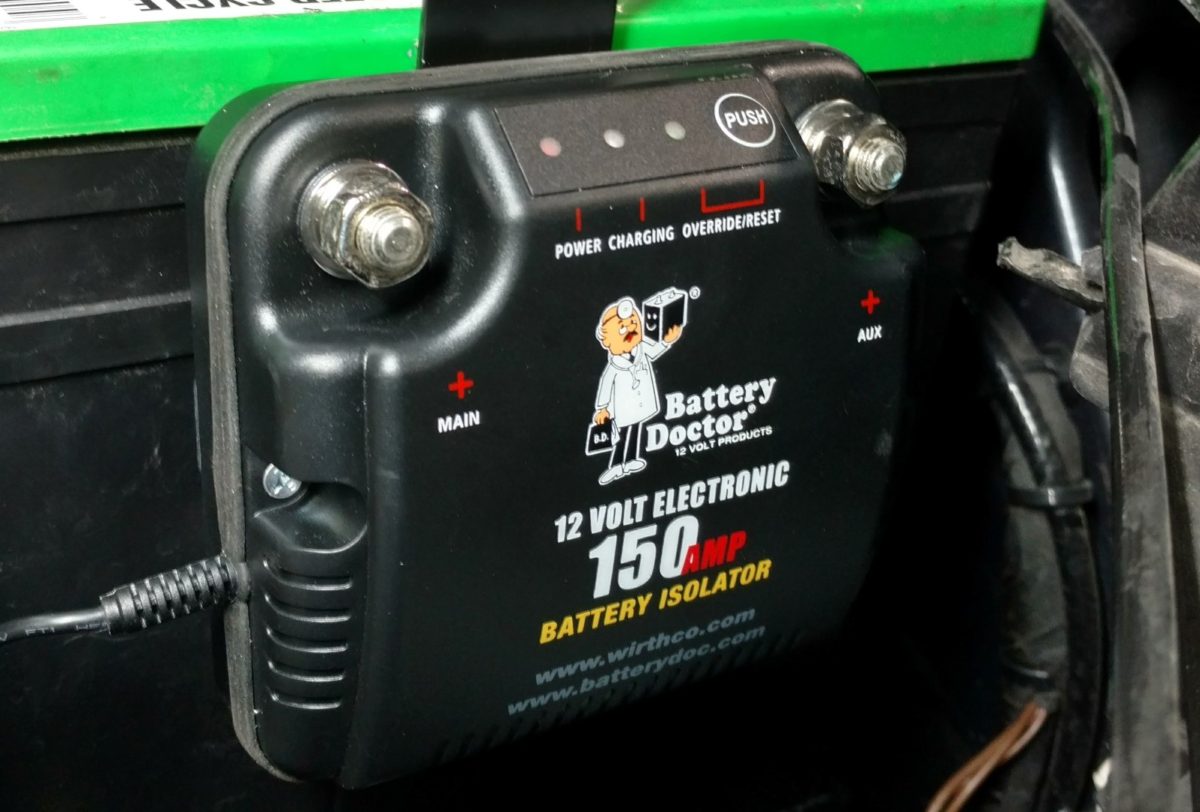
To finish things off with a factory look and protect the terminals from accidental arcing,
I installed some of these 2/0 gauge battery terminal protectors.
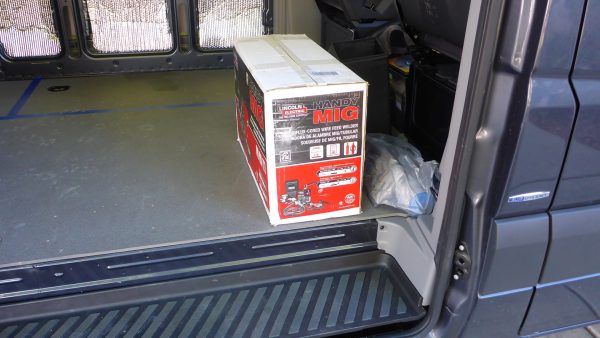
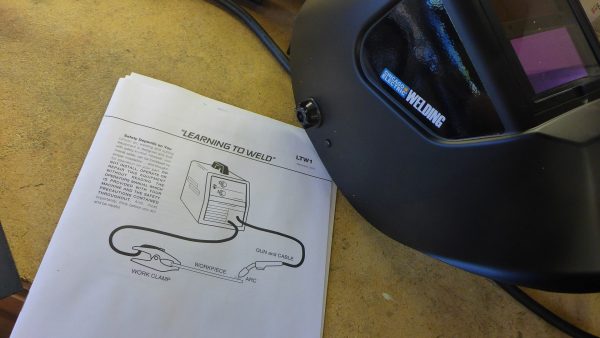
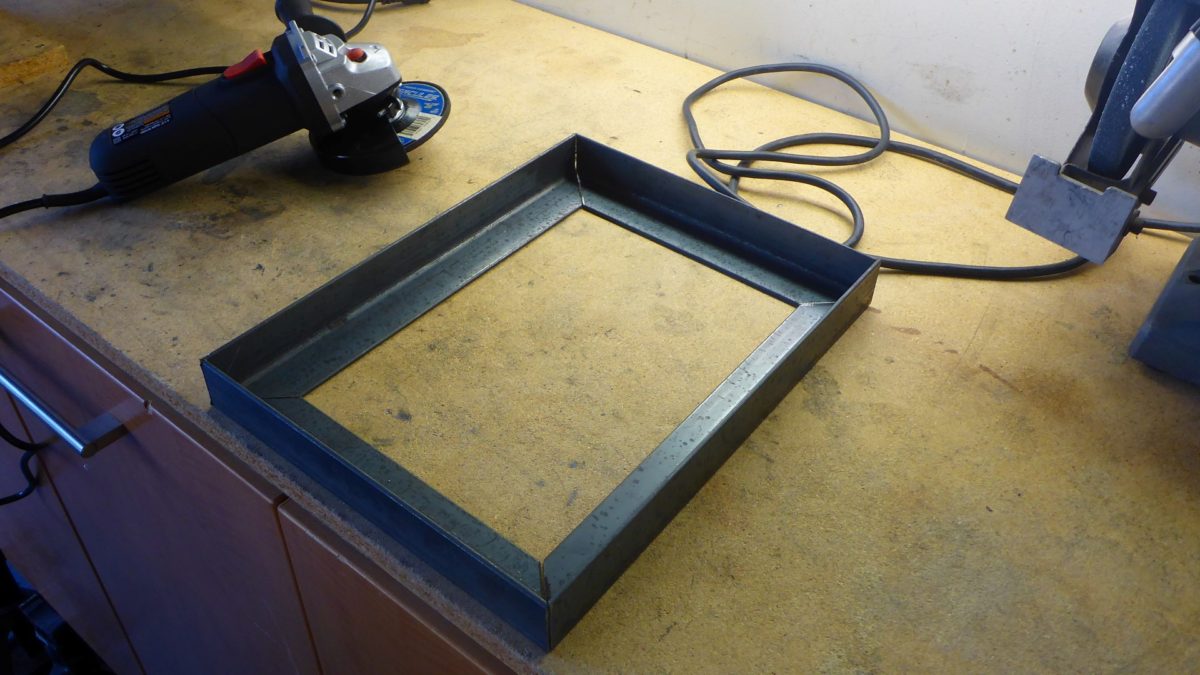
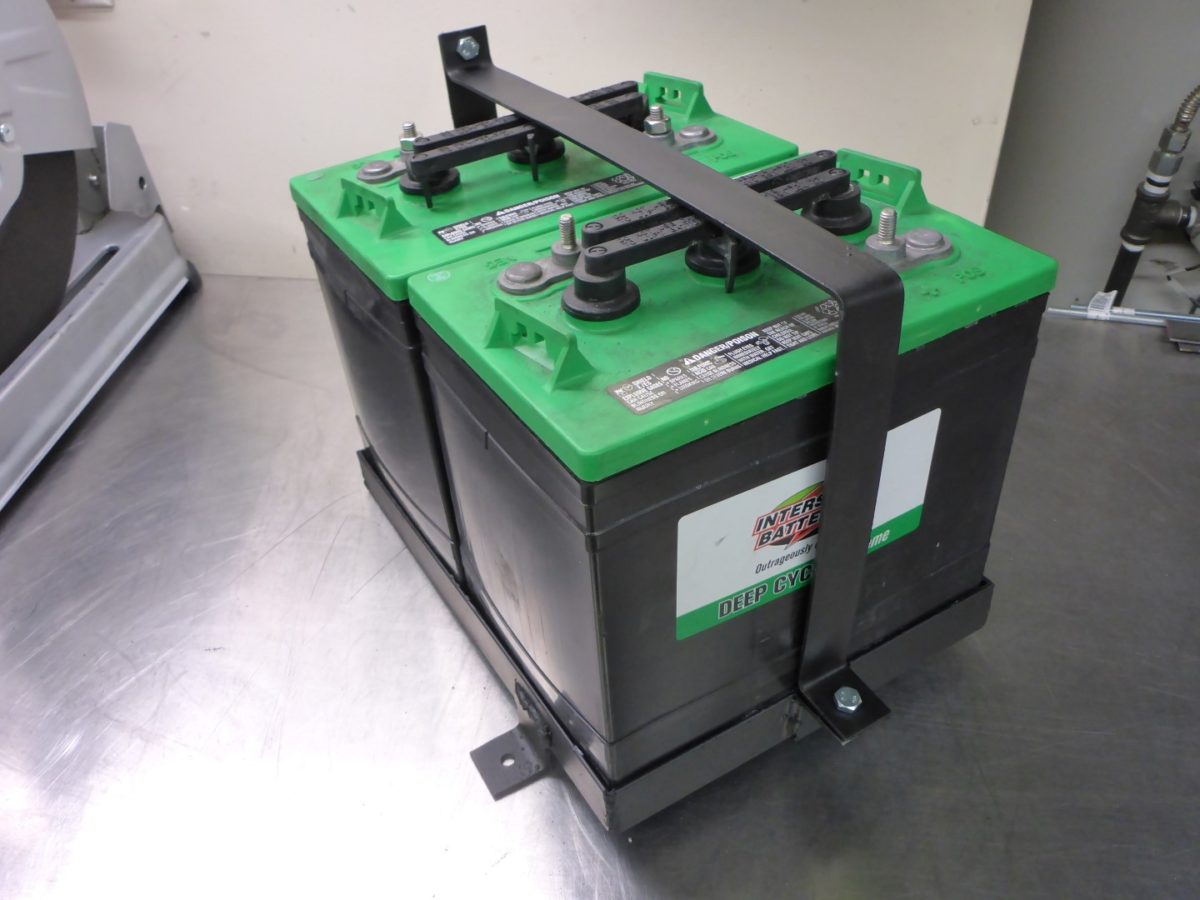
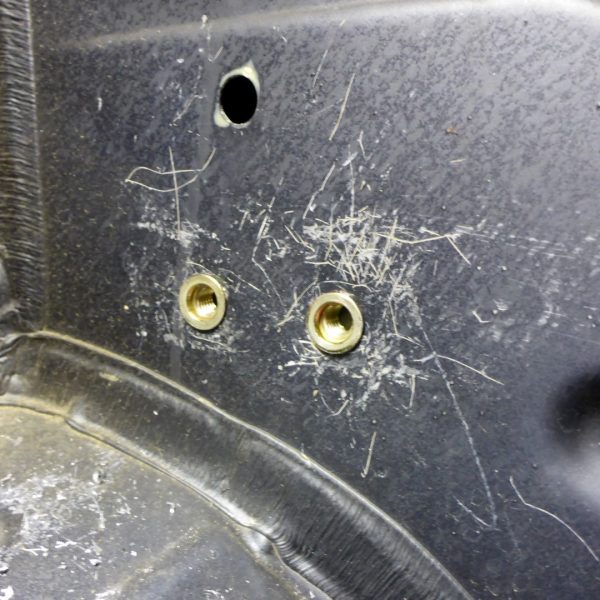
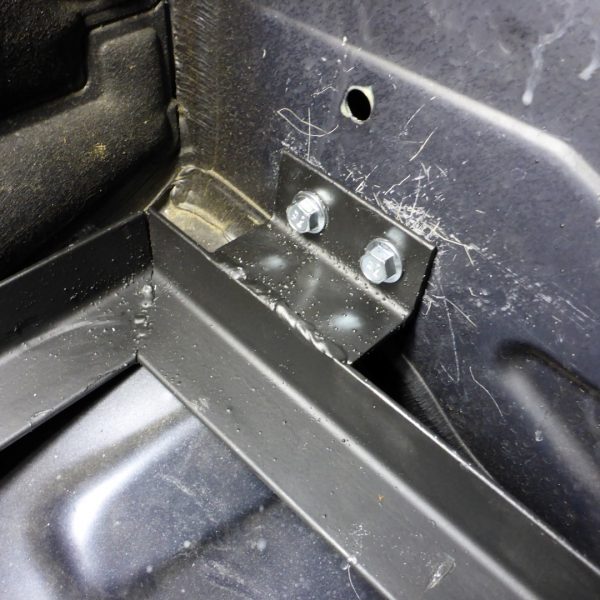
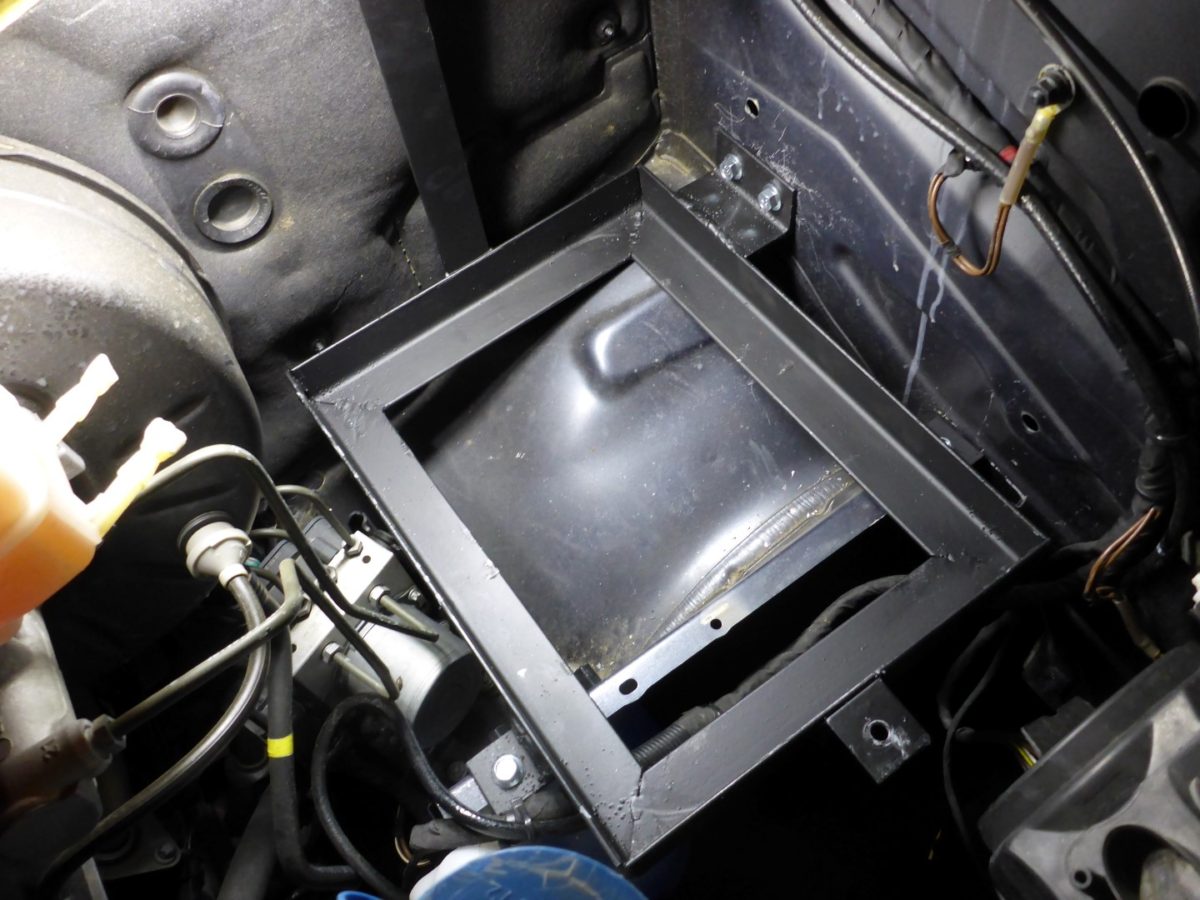
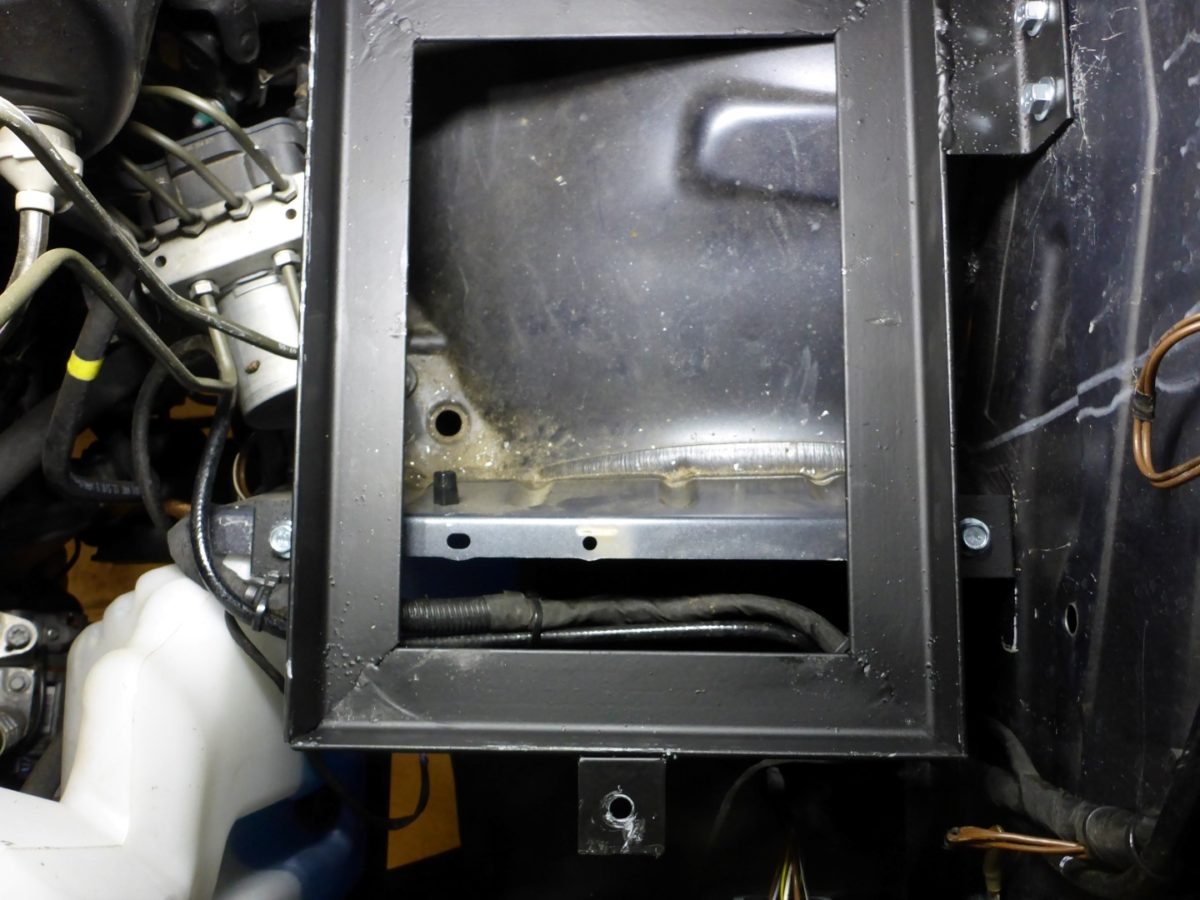
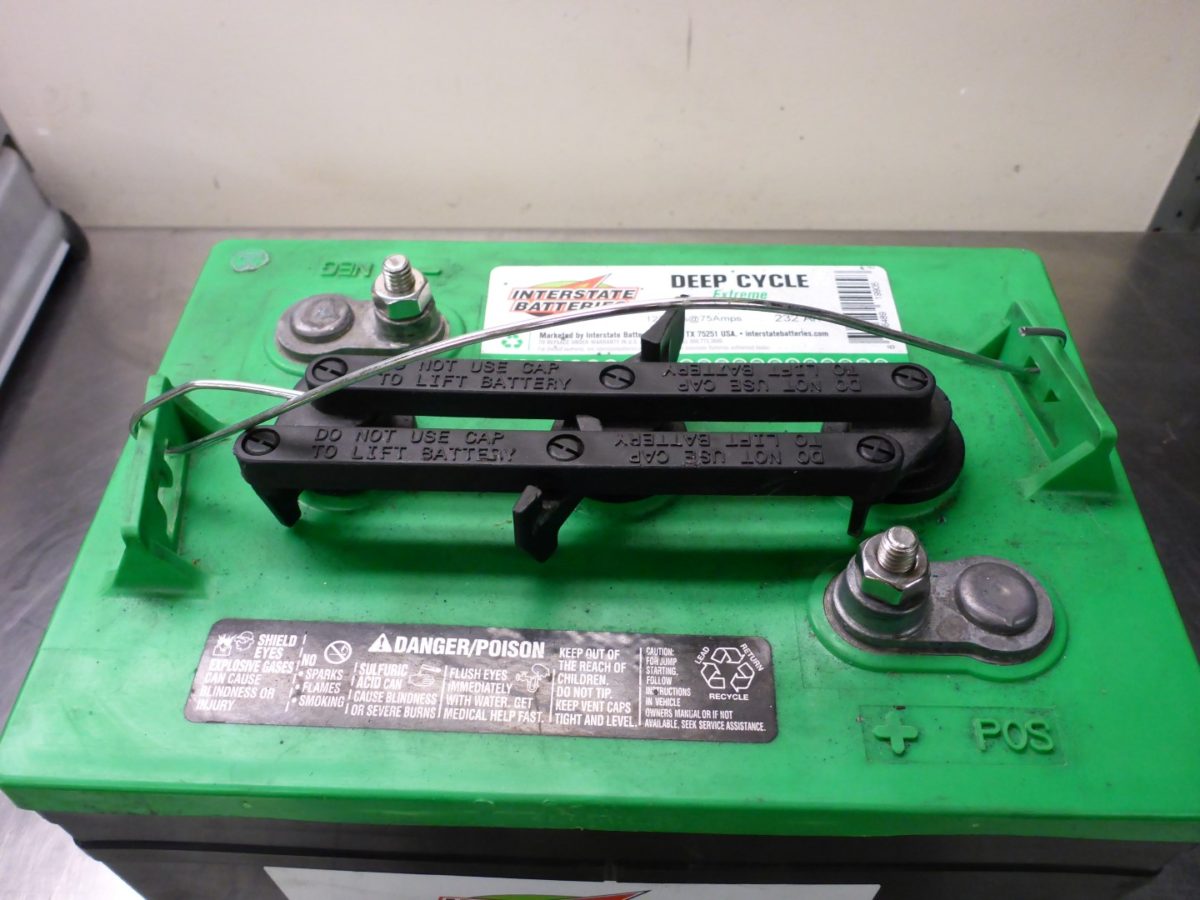
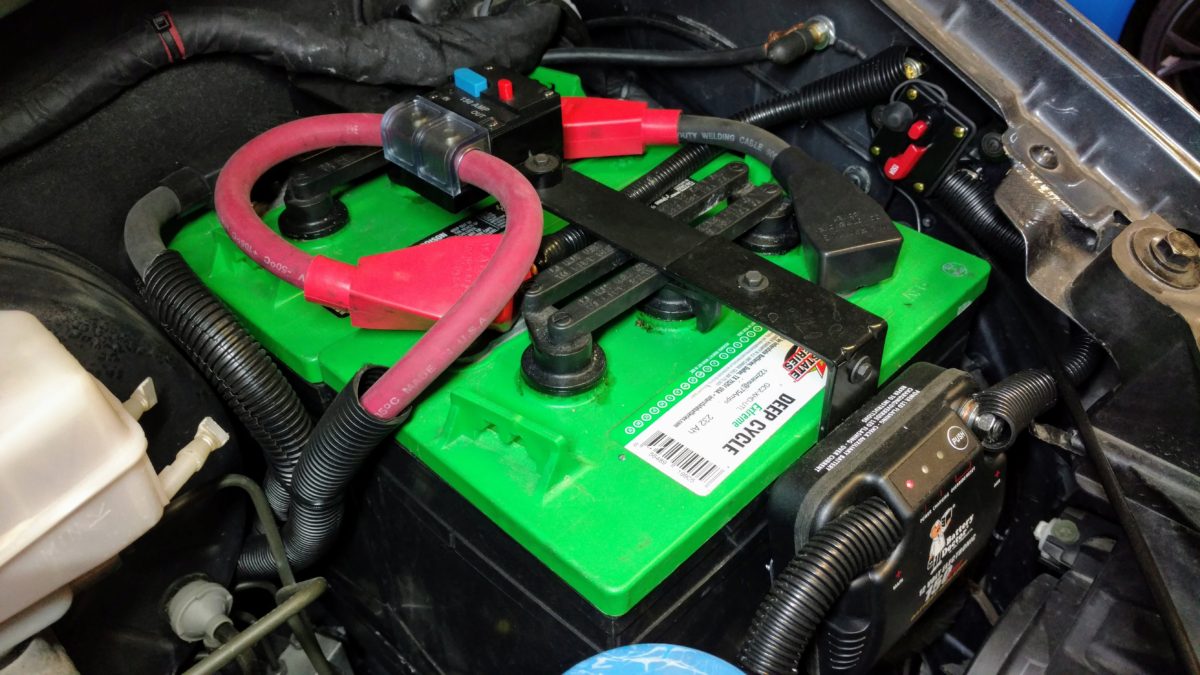
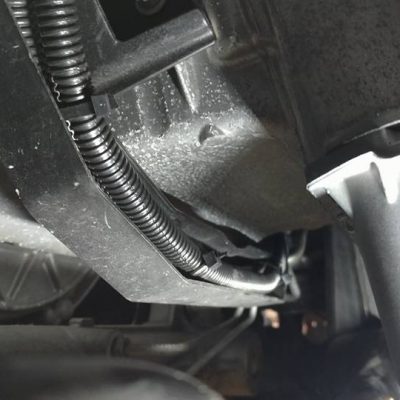
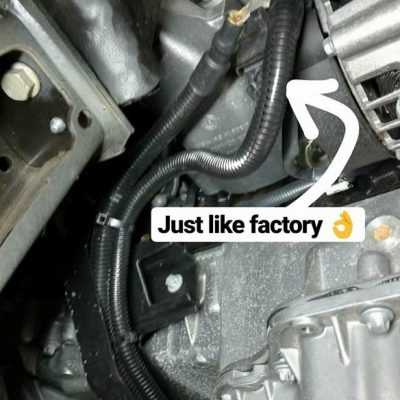
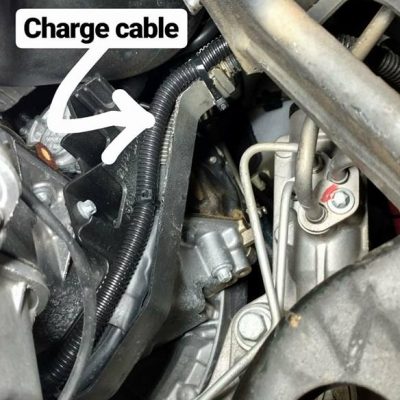
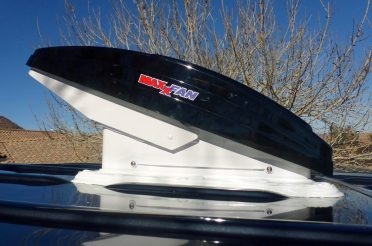

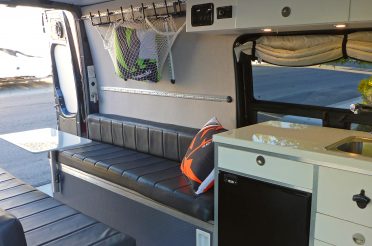
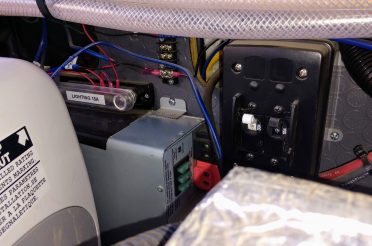
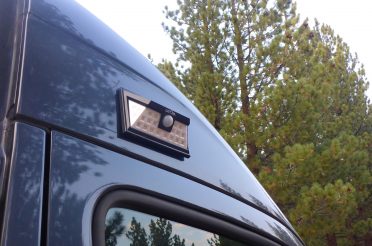

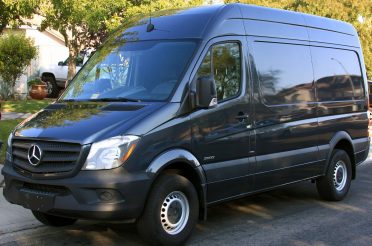

2 Responses
Randy
Hi Pete,
In researching replacing the 95 ah Mercedes oem aux with a pair of 6v in series like you have I see a lot of chatter in the forums about possible problems in reconfiguring the factory design for the 95 ah oem. Is your system still working well? If I did this could I simply move the oem 95 ah positive cable to the series connected 6v’s (incorporating the isolator you mentioned in the process…) This existing positive charges from the alternator, right?
Pete
Hi Randy. Our setup is still working great. The vehicle charges the batteries while we drive and haven’t had any issues. Solar is still needed for everything to stay charged, but the way you mentioned would work just fine. The only “issue” we have is we can’t monitor how much charge we are getting from the alternator because our battery monitor shunt installed at a second aux 200ah battery that is in the back of the van. Therefore, we might have more battery percentage left that the gauge reads. Not a big deal though.